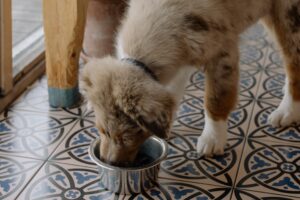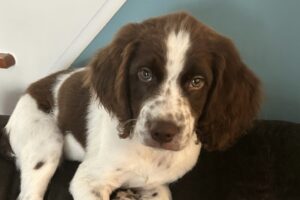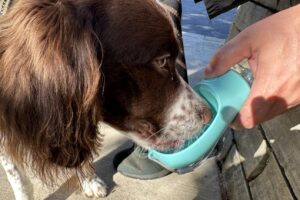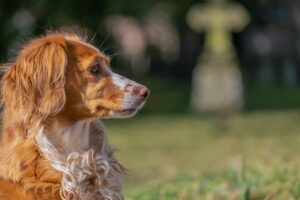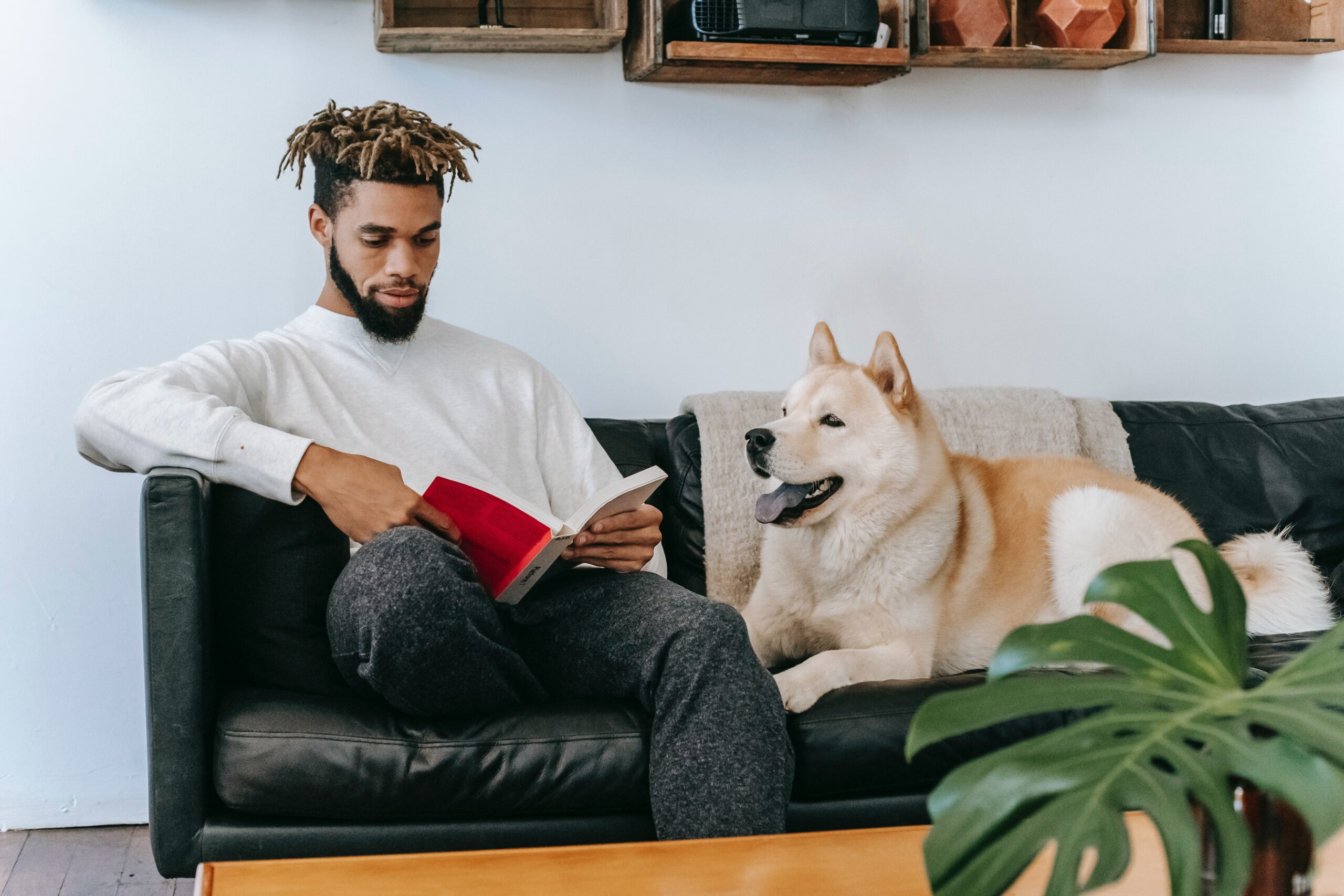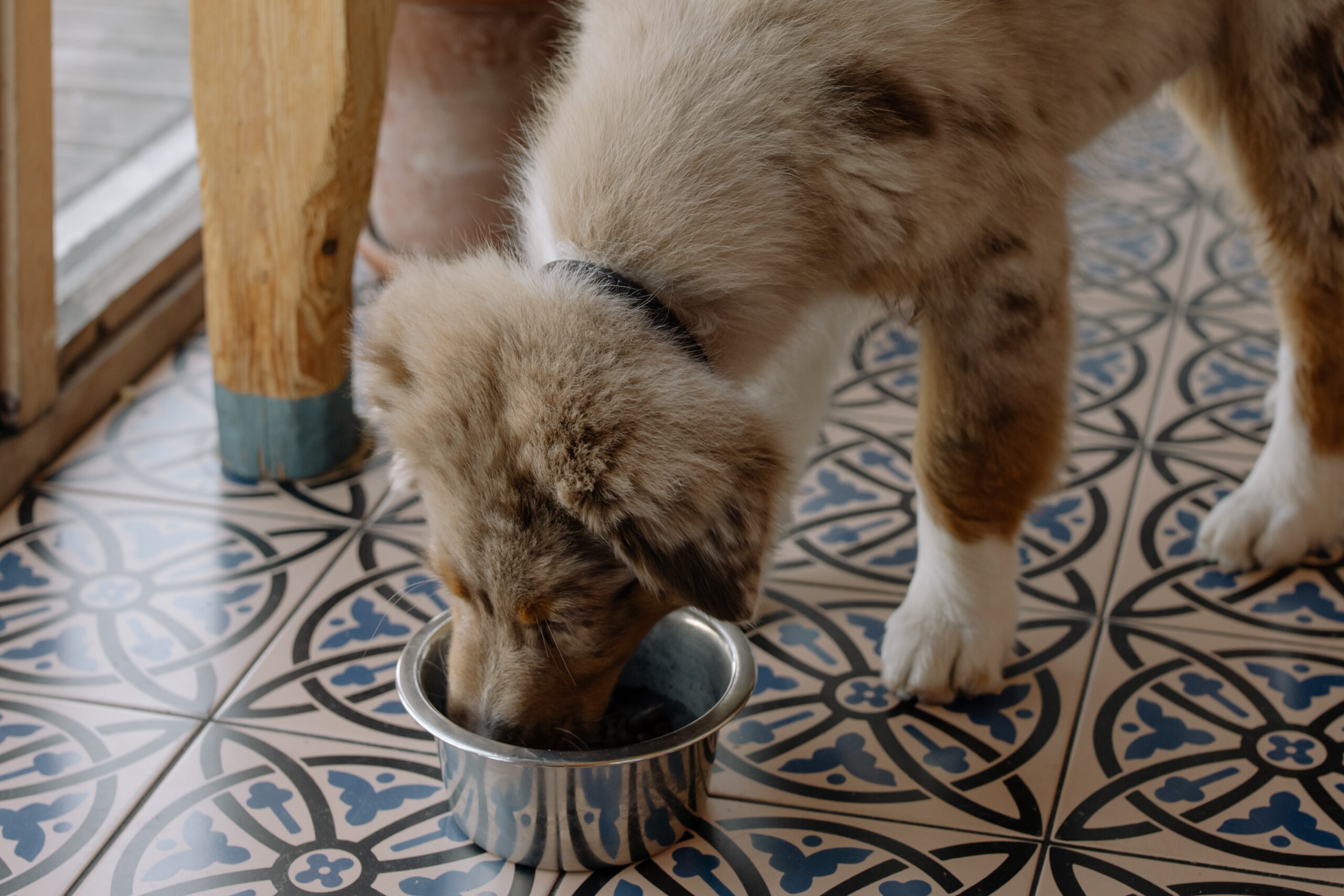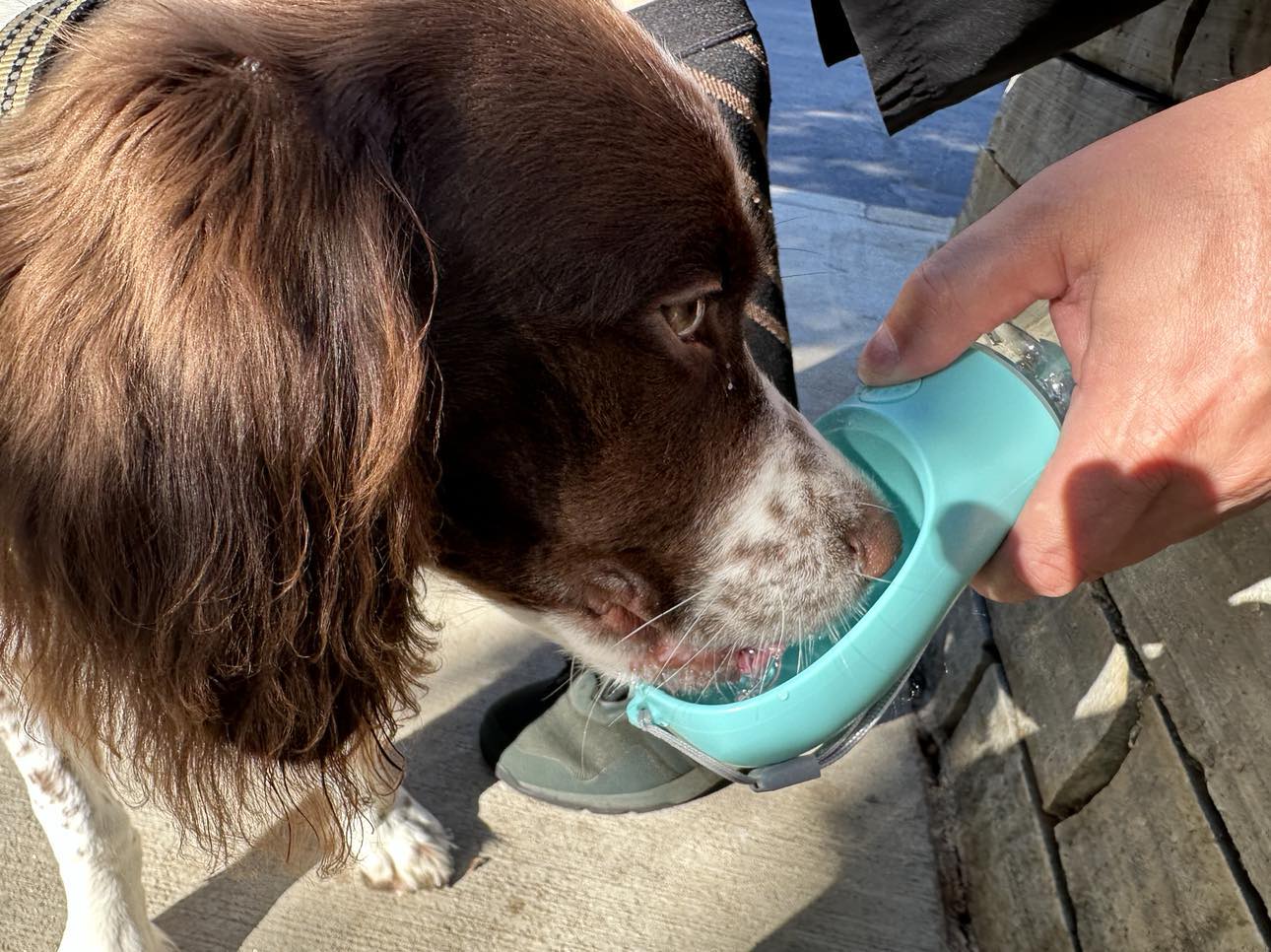Large dog breeds have been gaining popularity as suitable companions for apartment living, contrary to the traditional perception that only small dogs are well-suited for such environments. While smaller dogs have undeniable advantages in apartments due to their size, large breeds can also thrive under the right conditions.
Misconceptions about large dogs in apartments often stem from concerns about space limitations, exercise needs, and potential disruptions to neighbors. However, when properly chosen and cared for, large dogs can offer numerous benefits to apartment dwellers. Their loyal and affectionate nature, along with their protective instincts, can provide a sense of security and companionship for their owners. Moreover, some large breeds have moderate exercise requirements, making them more adaptable to apartment living than one might expect.
In this article, we will explore the factors to consider when choosing a large dog for an apartment, as well as the top large dog breeds that are well-suited for this living arrangement. We will also provide valuable tips on training, creating a comfortable environment, and being a responsible neighbor and dog owner in an apartment setting. By understanding the unique needs and characteristics of large dogs and addressing them appropriately, apartment dwellers can enjoy the fulfilling and rewarding experience of sharing their home with a loving and well-adjusted canine companion.
Factors to Consider When Choosing a Large Dog for an Apartment
Energy Levels and Exercise Requirements
When selecting a large dog breed for apartment living, it’s essential to consider their energy levels and exercise needs. While some large breeds are highly energetic and require ample physical activity, others are more laid-back and content with moderate exercise.
- High-Energy Breeds: If you lead an active lifestyle and can commit to providing regular outdoor activities, high-energy breeds like Labrador Retrievers, Boxers, or Border Collies may be suitable choices. These dogs thrive on regular exercise and mental stimulation to keep them happy and well-behaved in an apartment setting.
- Moderate-Energy Breeds: On the other hand, breeds such as Greyhounds, Bulldogs, or Basset Hounds have moderate exercise requirements. They enjoy daily walks and interactive play, but they are generally more relaxed and content with indoor activities, making them better suited for apartments with limited outdoor space.
Temperament and Sociability with Neighbors and Other Pets
A dog’s temperament plays a significant role in their adaptability to apartment living. Look for breeds that are friendly, social, and adaptable to various situations.
- Friendly and Sociable Breeds: Breeds like Golden Retrievers, Bernese Mountain Dogs, and Standard Poodles are known for their friendly and sociable nature. They tend to get along well with people and other pets, making them great choices for apartment dwellers who interact with neighbors and have other pets in the building.
- Reserved Breeds: Some large breeds, such as Great Danes or Chow Chows, may be more reserved and cautious around strangers. While they can still adapt to apartment living, early socialization is crucial to ensure they remain well-mannered and comfortable in various social situations.
Size and Space Considerations within the Apartment
Large dogs naturally take up more space, so it’s vital to assess the available living space in your apartment before choosing a breed.
- Space-Friendly Breeds: Breeds like Bullmastiffs or Irish Wolfhounds, though large in size, are often referred to as “gentle giants” and can adapt well to apartment living due to their calm and low-energy nature.
- Adequate Room to Move: Ensure your apartment layout allows enough room for your chosen breed to move comfortably and avoid feeling confined. Consider how much space is available for the dog’s bed, toys, and any designated play areas.
Grooming Needs and Shedding Tendencies
Large dog breeds may come with varying grooming requirements, including shedding tendencies and coat care.
- Low-Shedding Breeds: If you prefer a dog with minimal shedding, consider breeds like Poodles, Airedales, or Portuguese Water Dogs. These breeds have hypoallergenic coats and shed less than others, which can be beneficial for apartment living.
- Regular Grooming: Some large breeds, such as Siberian Huskies or Saint Bernards, may have thick, double coats that require more frequent grooming to manage shedding and prevent matting.
By carefully considering the energy levels, temperament, size, and grooming needs of different large dog breeds, you can make an informed decision that aligns with your apartment lifestyle. Selecting a breed that matches your living space and lifestyle ensures a harmonious and enjoyable coexistence between you and your canine companion in the apartment setting.
Top Large Dog Breeds for Apartment Living
Labrador Retriever
- Friendly and Adaptable Nature: Labrador Retrievers are renowned for their friendly and sociable personalities. They are affectionate, gentle, and often get along well with people of all ages, making them ideal for apartment living, especially in buildings with families and children. Their adaptable nature allows them to adjust well to various living conditions, including smaller spaces like apartments.
- Moderate Exercise Needs: Despite being large dogs, Labradors have moderate exercise requirements. Regular walks, interactive play, and mentally stimulating activities are usually sufficient to keep them happy and content. Their versatility makes them adaptable to apartment living, as long as they receive adequate physical and mental stimulation.
- Low Grooming Requirements: Labradors have short, dense coats that require minimal grooming. Occasional brushing to remove loose hairs and regular nail trims and ear cleaning are typically sufficient to keep their coat in good condition. Their low grooming needs make them convenient and easy to care for in an apartment setting.
Greyhound
- Gentle and Quiet Temperament: Greyhounds are known for their gentle and calm demeanor, making them excellent companions for apartment dwellers seeking a tranquil environment. Despite their racing background, Greyhounds are surprisingly quiet and well-mannered indoors, which can be highly desirable for apartment living.
- High Sprint Energy, but Otherwise Low Exercise Needs: Greyhounds are sprinters and enjoy brief bursts of high-speed activity. However, once their energy is expended, they are content to lounge and rest for extended periods. A couple of daily walks and occasional opportunities to run in a safe, enclosed area are usually enough to meet their exercise requirements.
- Short Coat with Minimal Shedding: Greyhounds have short, sleek coats that shed very little. Their minimal grooming needs make them a practical choice for apartment living, as they don’t require frequent brushing or extensive coat maintenance.
Bulldog
- Relaxed and Affectionate Disposition: Bulldogs are known for their easygoing and affectionate nature. They are excellent indoor companions and typically adapt well to apartment living due to their relaxed and laid-back demeanor.
- Low to Moderate Exercise Needs: Bulldogs are not overly active dogs and have relatively low exercise requirements. Short daily walks and some indoor play are usually sufficient to keep them content and happy in an apartment setting.
- Minimal Grooming Requirements: Bulldogs have short, smooth coats that shed moderately. They require minimal grooming, such as occasional brushing and regular cleaning of their facial wrinkles to prevent any skin issues.
Standard Poodle
- Intelligent and Trainable: Standard Poodles are highly intelligent dogs known for their quick learning and adaptability. Their high level of intelligence makes training a breeze, and they excel in obedience and various dog sports. Their ability to grasp commands quickly and their desire to please their owners make them wonderful candidates for apartment living.
- Moderate Exercise Needs: Despite being larger dogs, Standard Poodles have moderate exercise requirements. Regular walks and play sessions, along with mental stimulation activities like puzzle toys or training exercises, are enough to keep them mentally and physically stimulated. Their moderate exercise needs suit apartment living well, especially when combined with their intellectual stimulation.
- Non-shedding, Hypoallergenic Coat: Standard Poodles have a luxurious, curly coat that is non-shedding and hypoallergenic. This is a significant advantage for individuals with allergies or those who prefer a clean living space with minimal fur shedding. Regular grooming, including brushing and professional grooming sessions, is necessary to keep their coat in optimal condition.
Bernese Mountain Dog
- Calm and Gentle Demeanor: Bernese Mountain Dogs have a calm and gentle disposition, making them excellent family pets and apartment companions. Their affectionate nature and love for human companionship make them a comforting presence in the home.
- Moderate Exercise Requirements: While Bernese Mountain Dogs are large, they have moderate exercise needs. Daily walks, play sessions, and some outdoor time are necessary to keep them physically and mentally stimulated. They enjoy leisurely walks and do not require excessive activity, which can be well-suited for apartment living.
- Regular Grooming Needed for Their Long Coat: Bernese Mountain Dogs have a stunning long, double coat that requires regular grooming to prevent matting and tangles. Frequent brushing, especially during shedding seasons, is essential to maintain the health and appearance of their coat.
Training and Socialization Tips for Apartment Living
House-training and Indoor Manners
- Consistent Routine: Establish a regular feeding and potty schedule for your large dog to promote proper house-training. Consistency is key to helping them understand when and where to eliminate.
- Use Positive Reinforcement: Utilize positive reinforcement techniques such as treats, praise, and gentle encouragement when your dog displays good indoor manners, like using a designated potty area or avoiding destructive behaviors.
- Crate Training: Consider crate training your dog to provide them with a safe and comfortable space while you’re away or during bedtime. Proper crate training helps prevent accidents and encourages your dog to view their crate as a cozy den.
Proper Leash Etiquette in Common Areas
- Leash Training: Teach your large dog to walk calmly on a leash to ensure pleasant strolls through common areas within the apartment complex. Use rewards for good behavior and practice loose-leash walking during walks.
- Be Mindful of Others: In shared spaces, be considerate of other residents and pets. Keep your dog on a short leash and control their movements around common areas, elevators, and hallways.
- Respect Pet Policies: Familiarize yourself with the apartment’s pet policies and adhere to any leash regulations or designated pet areas to maintain a harmonious living environment.
Socializing with Neighbors and Other Pets
- Friendly Introductions: Properly introduce your large dog to your neighbors, especially those living nearby or sharing common spaces. Allow them to interact gradually to build a positive relationship.
- Controlled Socialization: Supervise playtime and interactions with other pets to ensure everyone’s safety and comfort. Slow and controlled introductions help prevent any potential conflicts or anxieties.
- Attend Training Classes: Consider enrolling your dog in training classes or socialization groups to improve their interactions with other dogs and people. This can help them become more at ease in different social settings.
Remember, socialization and training are ongoing processes, and patience is essential. Positive reinforcement and consistency in training will foster a well-mannered and confident large dog, making apartment living enjoyable for both you and your furry companion. Proper training and socialization contribute to a positive living experience and help create a respectful and harmonious community environment among apartment residents and their pets.
Creating a Comfortable Environment for Large Dogs in Apartments
Providing Appropriate Exercise Opportunities Within the Apartment
- Interactive Play: Engage your large dog in interactive play sessions to keep them mentally and physically stimulated indoors. Toys like puzzle feeders, treat-dispensing toys, and interactive games can provide mental challenges and prevent boredom.
- Indoor Training: Incorporate training exercises into your daily routine to keep your dog engaged and mentally active. Teaching them new commands or tricks not only provides mental stimulation but also strengthens your bond.
- Climbing and Scratching Options: Consider providing climbing posts or cat trees for larger breeds that enjoy perching or scratching. These options can satisfy their natural instincts while preventing them from using furniture for the same purpose.
Designating a Dedicated Space for the Dog’s Bed and Belongings
- Comfortable Bedding: Provide a comfortable and cozy bed for your large dog to rest and relax. Make sure it is appropriately sized to accommodate their body comfortably.
- Personalized Area: Set aside a specific area in your apartment for your dog’s belongings, such as toys, food bowls, and water dishes. Having a designated space for their possessions creates a sense of security and familiarity.
- Privacy and Calmness: Ensure that your dog’s designated area is quiet and free from excessive foot traffic. This will allow them to have a peaceful retreat where they can rest undisturbed.
Ensuring Access to Outdoor Areas and Nearby Parks
- Regular Outdoor Walks: Take your large dog for regular outdoor walks to provide them with fresh air, mental stimulation, and opportunities to relieve themselves. Daily walks are vital for their physical and emotional well-being.
- Seek Pet-Friendly Amenities: Look for apartment complexes that have pet-friendly amenities, such as dog parks or nearby green spaces. Having access to such areas allows your dog to have safe and enjoyable playtime outdoors.
- Plan Excursions: Occasionally take your dog on longer walks or excursions to nearby parks where they can explore new scents and surroundings. This can enrich their lives and prevent feelings of monotony.
Creating a comfortable environment for your large dog in an apartment involves providing ample opportunities for exercise, designating a cozy space for their belongings, and ensuring access to outdoor areas for play and exploration. By enriching their indoor and outdoor experiences, you can help them lead a happy and fulfilling life, even in a smaller living space. Remember, a well-cared-for and contented large dog is more likely to be a well-behaved and happy companion within your apartment.
Establishing a Routine for Apartment Living
Consistent Feeding and Potty Schedules
- Set Regular Meal Times: Establish fixed meal times for your large dog to maintain a consistent feeding schedule. This routine helps regulate their digestive system and prevents potential accidents indoors.
- Designated Potty Breaks: Schedule regular potty breaks throughout the day, especially in the morning, after meals, and before bedtime. Consistency in bathroom breaks helps with house-training and ensures your dog’s comfort and well-being.
- Use Positive Reinforcement: When your dog follows the established routine and goes potty outside, praise and reward them with treats to reinforce good behavior.
Incorporating Mental Stimulation and Interactive Play
- Puzzle Toys and Treat Dispensers: Use puzzle toys and treat dispensers to engage your dog’s mind and keep them mentally stimulated. These toys challenge their problem-solving skills and provide entertainment when you’re not able to engage in interactive play.
- Training Sessions: Regular training sessions not only improve your dog’s behavior but also offer mental enrichment. Teaching new tricks or reinforcing existing commands keeps their mind active and focused.
- Rotate Toys: Rotate your dog’s toys regularly to keep their interest and prevent boredom. Introducing new toys occasionally can be exciting and prevent them from losing interest in their playthings.
Balancing Alone Time and Companionship
- Gradual Alone Time: Gradually acclimate your large dog to being alone in the apartment. Start with short periods and gradually increase the duration to help them feel comfortable and secure when left alone.
- Provide Interactive Toys: Leave interactive toys or treat puzzles for your dog to enjoy during your absence. These toys can keep them entertained and prevent feelings of loneliness.
- Arrange Dog-Sitting or Doggy Daycare: If you have long workdays or commitments, consider arranging for a dog-sitter or enrolling your dog in a doggy daycare to provide them with companionship and socialization.
Finding the right balance between companionship and alone time is crucial for a well-adjusted and contented large dog in an apartment setting. By establishing a consistent routine that includes regular feeding and potty schedules, mental stimulation, interactive play, and balanced alone time, you can help your furry companion lead a happy and fulfilling life in your apartment. A routine provides structure and stability, which is comforting to dogs and fosters a positive living experience for both you and your beloved canine friend.
Conclusion
Having a large dog in an apartment setting can be a rewarding and enjoyable experience when approached with careful consideration and responsible ownership. Throughout this article, we have explored various factors to consider when choosing a large dog breed for apartment living and highlighted some of the top breeds that can thrive in smaller spaces. We have also provided essential training and socialization tips, along with creating a comfortable environment for your furry companion.
Recap of the Advantages of Having a Large Dog in an Apartment Setting
- Companionship: Large dogs are known for their loyalty and affection, providing a strong bond and companionship for apartment dwellers.
- Security: Large breeds can offer a sense of security to their owners and create a deterrent effect against potential intruders.
- Exercise Adaptability: Many large breeds have moderate exercise needs, making them adaptable to apartment living, especially when provided with proper mental and physical stimulation.
- Temperament: Selecting the right large breed with a gentle and calm temperament can result in a harmonious and peaceful coexistence within the apartment environment.
- Socialization: Living in an apartment complex allows ample opportunities for socializing your dog with neighbors and other pets, fostering a sense of community.
Practice Responsible Ownership and Consideration for the Dog’s Needs in the Apartment Environment
- Training and Socialization: Proper training and socialization are essential for a well-behaved and confident dog in apartment living. Investing time and effort in training will create a positive living experience for both you and your pet.
- Exercise and Mental Stimulation: Large dogs, despite their size, need regular exercise and mental stimulation to stay healthy and content. Providing these opportunities within the apartment and nearby outdoor areas is crucial.
- Respectful Neighbor Relations: Being a responsible dog owner includes considering your neighbors’ needs and maintaining proper etiquette in shared spaces. Practicing good leash manners and managing any potential noise is essential for maintaining a harmonious community.
- Adequate Space and Comfort: Ensuring your large dog has a designated space for rest, play, and their belongings contributes to their comfort and well-being in the apartment.
In conclusion, having a large dog in an apartment setting can be a fulfilling experience when approached with thoughtfulness, commitment, and a genuine understanding of your pet’s needs. By considering the breed’s energy levels, temperament, and grooming requirements, as well as providing adequate exercise, mental stimulation, and companionship, you can create a loving and harmonious living environment for your beloved canine companion. Responsible ownership and consideration for your dog’s well-being will ultimately lead to a happy and thriving furry roommate, making apartment living a joyous and memorable experience for both of you.

